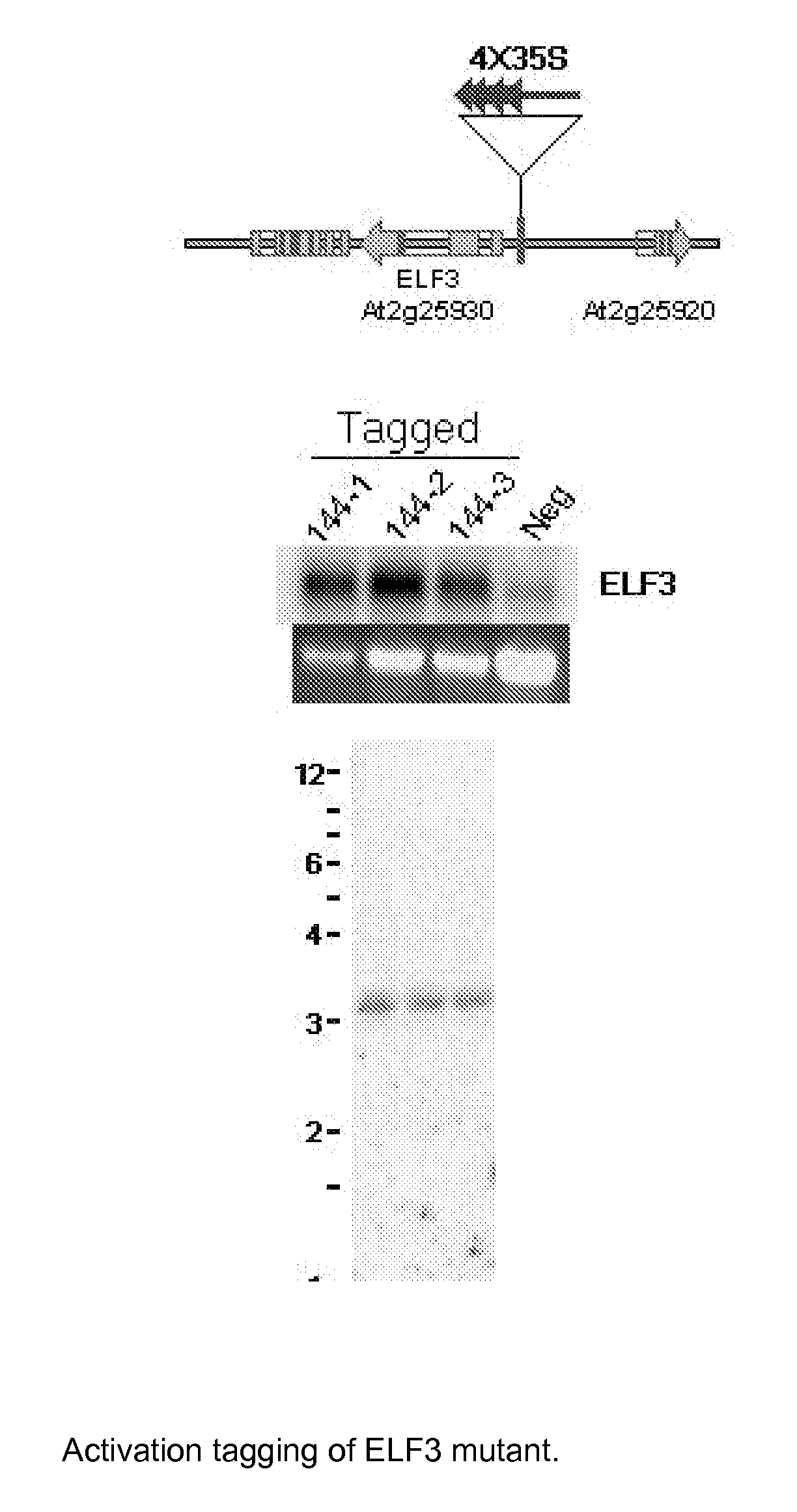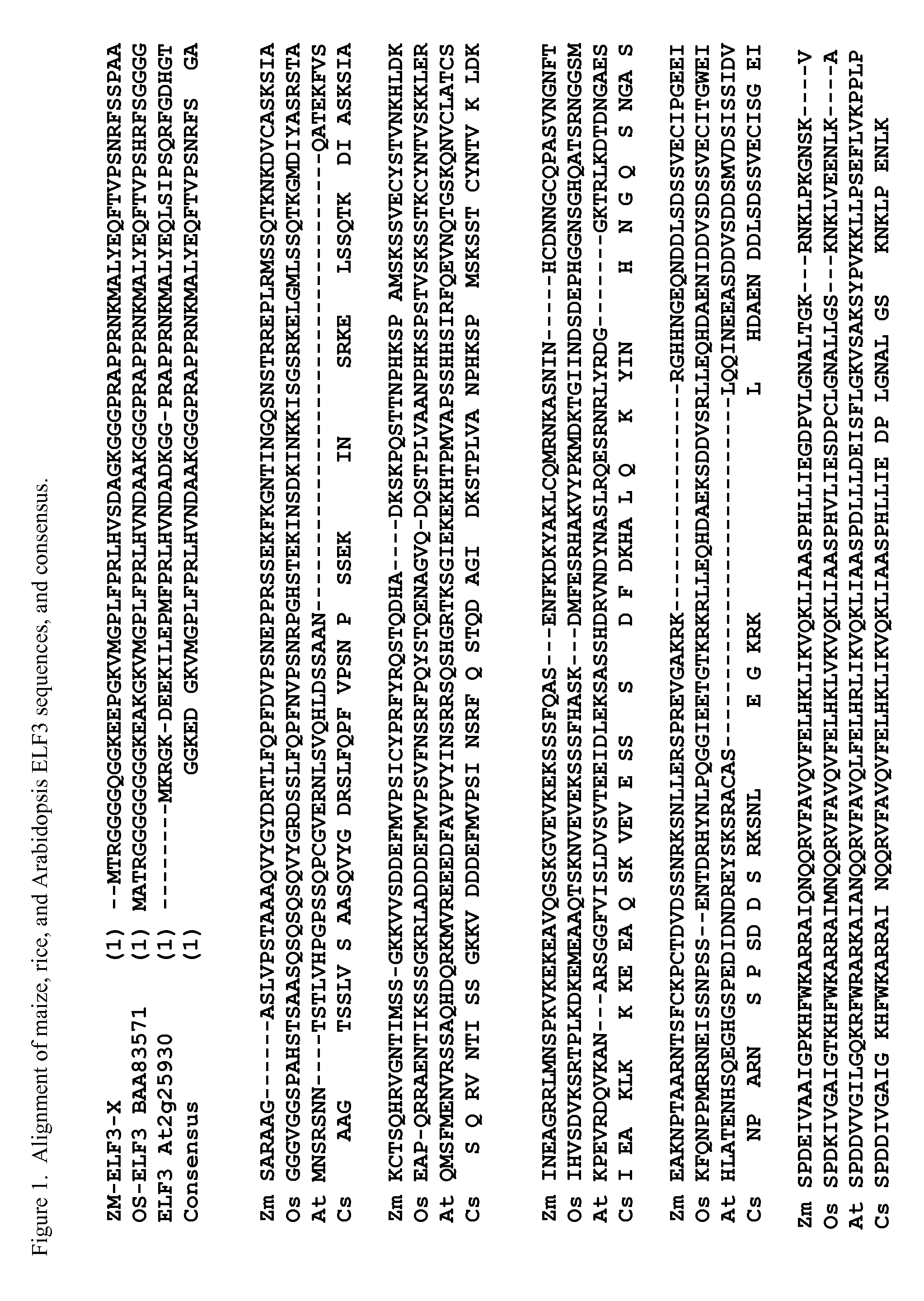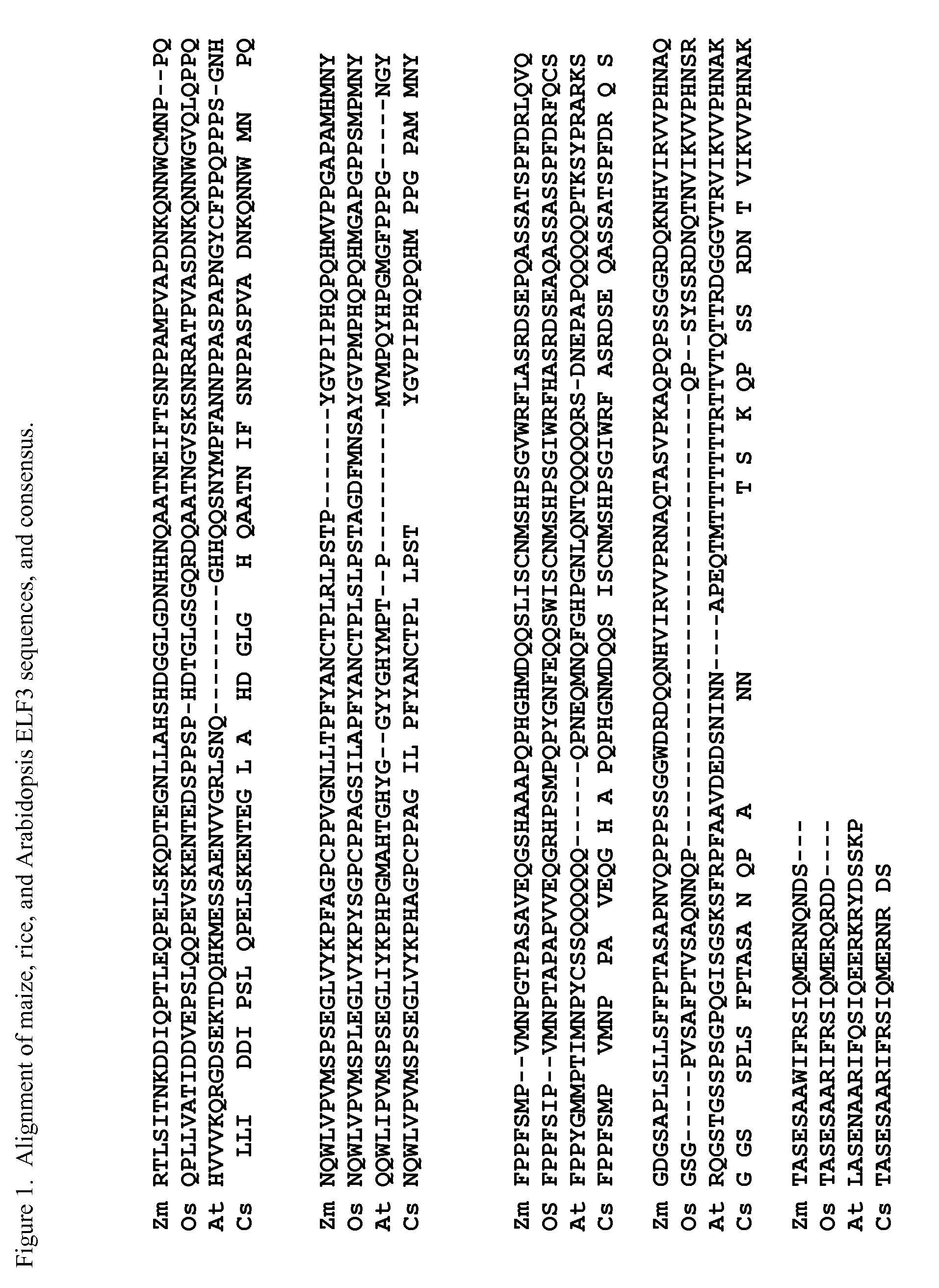Compositions and Methods for Increasing Plant Tolerance to High Population Density
a technology of population density and composition, applied in the field of genetic manipulation of plants, can solve the problems of reducing the availability of storage and reproduction resources, and achieve the effects of increasing plant tolerance, reducing the shade-avoidance response of plants, and improving plant growth and yield
- Summary
- Abstract
- Description
- Claims
- Application Information
AI Technical Summary
Problems solved by technology
Method used
Image
Examples
example 1
Identification and Cloning of ZM-ELF3 and bHLH-041 Genes
[0146]Activation tagging can be used to identify genes with the ability to affect a trait of interest. Insertions of transcriptional enhancer elements can dominantly activate and / or elevate the expression of nearby endogenous genes. By making a large population with these enhancer elements randomly inserted throughout the genome, one can assess the ability of nearly every gene to modify the trait of interest. This approach has been successfully used in the model plant species Arabidopsis thaliana. (Weigel, et al., 2000 Plant Physiol. 122:1003-1013). Isolation of genes associated with density response followed established protocols for activation tagging (Aukerman and Sakai (2003) Plant Cell 15(11):2730-2741).
[0147]An 18.4 kb T-DNA based binary construct, pHSbarENDs, that contains four multimerized enhancer elements derived from the Cauliflower Mosaic Virus 35S promoter, corresponding to nucleotides −341 to −64, as defined by Od...
example 2
Overexpression of ZM-ELF3 in Transgenic Arabidopsis Confers Density Tolerance
[0156]A full-length ZM-ELF3 was over-expressed in transgenic Arabidopsis using the SCP promoter (U.S. Pat. No. 6,555,673). The plants were transformed using the floral dip method (Clough and Bent (1998) Plant Journal 16(6):735-743). In this manner, the plants were dipped in a culture of Agrobacterium transformed with a co-integrate vector containing the ZM-ELF3 gene. Transgenic plants were identified by glufosinate resistance and grown to the subsequent generation, where seed were collected. Several transgenic lines and wild-type (WT) plants were assayed for density tolerance by determining their yield and plant performance under high density planting. High density in this screen was one plant per cm2, which is about four times the density of optimal Arabidopsis growth.
[0157]Transgenic plants were less susceptible to high plant density-induced decreases in leaf length (FIG. 2A) and leaf number at flowering ...
example 3
Transformation and Regeneration of Transgenic Maize Plants Overexpressing the ZM-ELF3 Protein
[0159]Immature maize embryos from greenhouse donor plants are bombarded with a plasmid containing the ZM-ELF3 nucleotide sequence of SEQ ID NO: 1 or 2 operably linked to the maize ubiquitin-1 (UBI1) promoter and the selectable marker gene PAT (Wohlleben, et al., (1988) Gene 70:25-37), which confers resistance to the herbicide Bialaphos. Alternatively, the selectable marker gene is provided on a separate plasmid. Transformation is performed as follows. Media recipes follow below.
Preparation of Target Tissue
[0160]The ears are husked and surface sterilized in 30% Clorox bleach plus 0.5% Micro detergent for 20 minutes, and rinsed two times with sterile water. The immature embryos are excised and placed embryo axis side down (scutellum side up), 25 embryos per plate, on 560Y medium for 4 hours and then aligned within the 2.5cm target zone in preparation for bombardment.
[0161]A plasmid vector comp...
PUM
| Property | Measurement | Unit |
|---|---|---|
| wave lengths | aaaaa | aaaaa |
| wave lengths | aaaaa | aaaaa |
| temperature | aaaaa | aaaaa |
Abstract
Description
Claims
Application Information
 Login to View More
Login to View More - R&D
- Intellectual Property
- Life Sciences
- Materials
- Tech Scout
- Unparalleled Data Quality
- Higher Quality Content
- 60% Fewer Hallucinations
Browse by: Latest US Patents, China's latest patents, Technical Efficacy Thesaurus, Application Domain, Technology Topic, Popular Technical Reports.
© 2025 PatSnap. All rights reserved.Legal|Privacy policy|Modern Slavery Act Transparency Statement|Sitemap|About US| Contact US: help@patsnap.com



